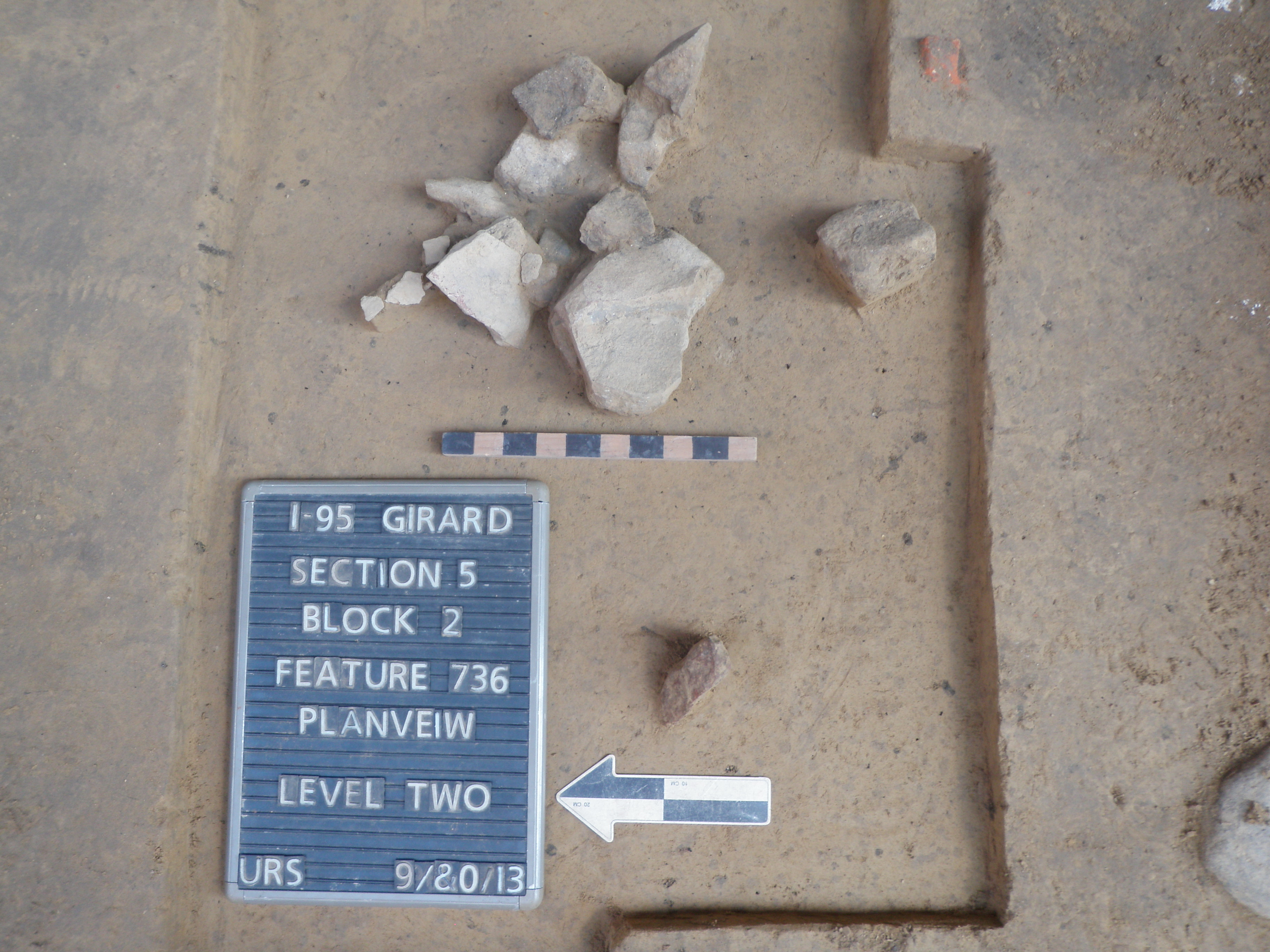The Shackamaxon #4 Site was originally tested in 2010 and subjected to more intensive documentation in 2013–2014. This pre-contact occupation was identified beneath the I-95 viaduct, in the block bounded by Montgomery Avenue, Delaware Avenue, and Berks Street.
| Site Name | Shackamaxon #4 |
| PASS# | 36PH0222 |
| Image | 1 image feature overview |
| Dates of Excavation | 2010-2014 |
| Phase of Excavation | Phase I, II and III |
| Number of Units | 90 |
| Approximate Number of Features Identified | 1 |
| Associated Periods | Pre-contact: unspecified culture period |
| Site Acreage | Approximately 0.69 acres |
Like other pre-contact sites in this vicinity (Shackamaxon #2 and #3, Tumanaranaming #4), artifacts comprising this occupation were impacted to some extent by the residential and commercial development of the neighborhood in the nineteenth century and the construction of I-95 in the twentieth century. Intact pre-contact artifact deposits that did survive were preserved in undisturbed soil horizons within historic-period backyard and undeveloped interior block spaces.
Geomorphological evaluations of these intact soils suggest that the pre-contact occupation was established on a low terrace overlooking the body of water the Lenape Indians called Lënapei Sipu (Delaware River). This landform was likely an extension of the terrace on which the adjacent Tumanaranaming #4 Site was established. Artifacts associated with this site were recovered predominantly from partially truncated plowzone (Ap-horizon) soils and intact upper subsoil (E-horizon) deposits exposed beneath 1 foot or less of fill overburden. Because of historic-period impacts, pre-contact artifacts were not recovered in a single, unbroken distribution, but rather were confined to two clusters approximately 80 feet apart.
Excavations within this site resulted in the recovery of widely scattered, generally low-density pre-contact lithic artifacts, but no evidence of pottery. Artifact deposits consisted primarily of tool-manufacturing debris and scattered fire-cracked rock (FCR). In addition, a small tool kit consisting of three artifacts was also found. Specific tools include a broken, reworked biface fragment and both chert and jasper endscrapers. A single pre-contact feature was identified and documented within this occupation, represented by a single partially impacted hearth feature. No wood charcoal was recovered in association with the hearth, and no carbon-14 date for this occupation could be ascertained.
While this site produced no temporally diagnostic artifacts that could be used to provide a relative date of occupation, some of the tools found could point to a fairly early date for this site. The endscrapers recovered from these excavations are examples of tools made and used by Native American people for thousands of years; however, these tool forms tend to be found more commonly at sites dating from the Paleoindian through Middle Archaic periods. Although an older date of occupation cannot be determined with certainty, such an early date would be consistent with the findings from the Shackamaxon #3 and Tumanaranaming #4 Sites, bordering this site on its west and east sides, respectively. Taken together, all three of these sites appear to represent a cluster of very early pre-contact procurement and/or residential sites along the Delaware River.
